I had a phenomenal time at the 10th anniversary of Anarchupulco in Bonfil, Mexico. This entry however is about how The Mexican International Airport, known as Aeropuerto Internacional Benito Juárez, is poisoning people all day, every day under – you guessed it – the guise of safety.
Last year for Anarchupulco, I flew directly into Acapulco airport, but because of Hurricane Otis, they stopped servicing international flights. Flights are now routed via the Aeropuerto Internacional Benito Juárez, which happens to be the primary international airport serving Greater Mexico City. It is the busiest airport in Mexico and Latin America, and the 17th-busiest airport in the world based on passenger traffic and aircraft movements. The airport handles an average of 132,000 daily passengers. That’s a lot of people being unnecessarily exposed to chemicals.
I spent six hours in Terminal Two/ Sala H waiting for my connecting flight to Miami while people in Tyvek suits and respirators continuously sprayed the seats and the aisles. They even sprayed the kiddie area and I watched as a small child slid down a slide rife with the chemical solution, and then stuck his fingers in his mouth after touching the plastic. Lovely.
I was waiting with a friend I met at the event but when he left to catch his plane to Toronto, a Tyvek-suited woman got a bit too close to me with her electric backpack nebulizer and ultra-low volume micronizer. I immediately got up and started filming.
I tweeted the footage and it’s already gotten 10K, which is great for my censored self. Beware the expletives. Being sprayed by poisons is the Beelady’s worst? nightmare.
What was as shocking as straight-up spraying poisons, was how completely unphased the people around me were by all the hazmat suits. Personally, I suffer from multiple chemical sensitivities. Just because the sheeple people are oblivious to their surroundings doesn’t mean they aren’t getting poisoned.
A female airport employee came to ask me what was wrong. When I told her I was reacting to the toxins and that passengers were being exposed to poisons, she said the solution was ‘Para Limpiar (“for cleaning”) and rolled her eyes. I bee-lined for the bathroom and when I exited, she was just outside my stall. I felt as though I was going to get in trouble and given I’d discovered my gate had changed, I didn’t engage. I dashed instead from Gate B to Gate D. It was the first time I’ve run since I tore my meniscus last May 2023. I barely made the flight.
Hasta luego, Mexico International Airport.
Optics For Guinea Pigs
The day after I landed, I started feeling ill. As I write this, my body aches, my liver hurts, my head hurts, and I have the chills. By day two, I had developed a cough and phlegm and my nose bled three times. For the record, I haven’t been this sick in at least seven years and I never got in the Rona. I felt fantastic at Anarchapulco and was healthy and strong before I left for my trip. I’ve dedicated my life to alerting people to toxins, so what exactly are the powers-that-(shouldn’t)-be spraying?
I learned that SIFSA, with its exclusive pest prevention, fumigation, and control program, is the Mexican company that handles sanitization at the airport. SIFSA’s business model allows them “to maximize results using the most innovative methods on the market.”
Their supposed specialists are accredited by the health authorities (COFEPRIS) for disinfection and pest control. COFEPRIS stands for Comisión Federal para la Protección contra Riesgos Sanitarios: Federal Commission for Protection against Sanitary Risks and they are the authorities when it comes to controlling and regulating drug products in Mexico. COFEPRIS works with the Good ‘ol Environmental Protection Agency (EPA).
Their website flaunts that upon the launch of the Rona Regime, they adopted top-notch attack protocols. Except the coronavirus “emergency” is over so why are they still using over-the-top disinfectant tactics at the expense of passengers? Maybe because very few people pay attention, let alone speak out?
SIFSA is preventively disinfecting against any type of bacteria, germ, or virus that could occur in the various areas of the airport. Thank God (read: sarcasm), given airports are said to be ‘even germier than the average nasty plane bathroom.”
It was determined that the product “must be a high-spectrum microbicide and disinfectant, based on quaternary salts, and must be applied directly or through nebulization depending on the area.” Other criteria was to use a product that can be “safely used at a high-level, safe-to-transport, non-irritant, non-corrosive disinfectant that does not require rinsing and is not harmful to passengers, workers, users, plants, animals, and food.”
It all sounded like it was on the up and up but I knew better. Why weren’t the product name or ingredients listed on the site and why did it say that ventilation is needed when disinfection is completed? That airport did not have ventilation.
Additionally, why do operators need to wear a “work uniform and safety equipment necessary to provide the service.”
- Reusable waterproof Tyvek-type coverall
- N95 type mask
- Safety glasses
- Dielectric safety shoe
- Latex or nitrile gloves
- Everything related to personal protection that is considered necessary for the safety of its workers
That’s quite a tall order. If workers have to take such precautions, is what they are spraying ‘for cleaning’ truly “safe?”
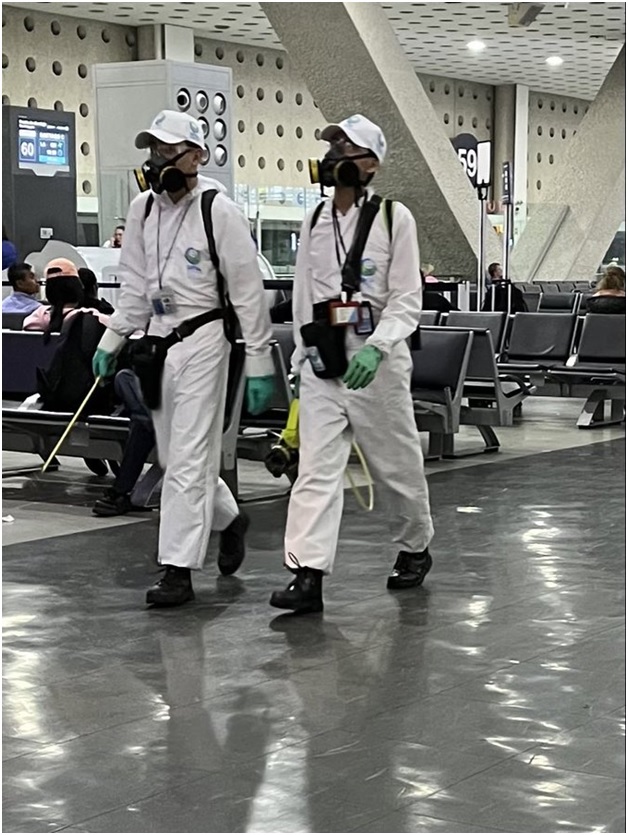
I reached out to SIFSA for a data sheet and after three attempts, I was put in touch with Rogelio Romero, a PR consultant for SIFSA. I recorded our phone conversation. You can listen to it here.
Rogelio promised to get me the technical information and conceded that these prevention protocols were first put in place against the coronavirus. He reassured me that the solution is ‘innocuous’ and that is also used to sanitize hospitals, as though that is supposed to incite confidence in me.
“It’s to prevent any kind of contagion so it’s not a toxic thing,” he stated.
“Well how about the PPE,” I asked.
“Well, that’s kind of a marketing thing.”
“A marketing thing?”
“Yes, in order to make people feel safe,” he said.
“Do you mean it’s just for optics? How does that make people feel safe? It’s the opposite. I don’t feel safe.”
“When the pandemic was going on, the people needed to feel that something was really being cleaned up. That’s why they started using masks and uniforms.”
“Okay, so are you saying they don’t really need to be wearing a Tyvek suit and a respirator?”
“Yes, and also whenever they use these substances, they use the ones indicated by international protocols… They’re safe.”
Sanitizing With Poisons
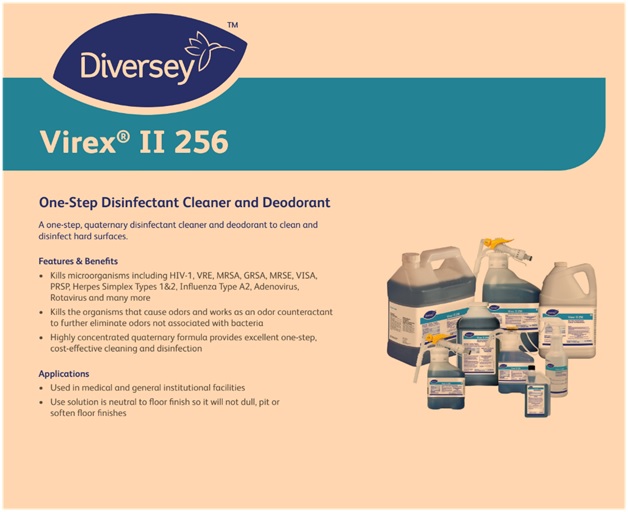
A day later, I learned that the product being sprayed is called Virex® II 256. It is made with Quaternary ammonium compounds (Quats), a large class of permanently charged cationic chemicals used in a variety of consumer and industrial products for their antimicrobial properties. Quats are used as preservatives, surfactants, antistatic agents, and as active ingredients for disinfectants and sanitizers.
The manufacturer Diversey is part of the 100-year-old company called Solenis that claims to relentlessly pursue their “purpose to go beyond clean to take care of what’s precious.”
Beyond clean seemingly amounts to poison.
- Virex® II 256 promises to kill microorganisms including HIV-1, VRE, MRSA, GRSA, MRSE, VISA, PRSP, Herpes Simplex Types 1&2, Influenza Type A2, Adenovirus, Rotavirus and many more
- Kill the organisms that cause odors and works as an odor counteractant to further eliminate odors not associated with bacteria
- Provide excellent one-step, cost-effective cleaning and disinfection
So if this quaternary-based disinfectant with it’s blue liquid and minty scent is so safe, why does it say that “individuals with chronic respiratory disorders such as asthma, chronic bronchitis, emphysema, etc., may be more susceptible to irritating effects?” And why is it listed as a corrosive that can cause serious eye damage?
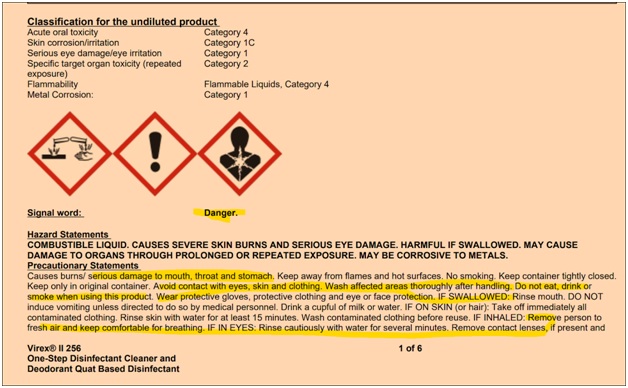
Exposure Limits, Quats, And Magic Trix
Global elitists used the Coronavirus as a Trojan Horse to usher in whatever they wanted. For some, it was a cash cow. For instance, under the Rona Regime, we saw an influx of sanitizers. Everywhere on this planet, sanitizer dispensers were installed, even in small banks in the jungle of Costa Rica. I should know, an adult Costa Rican male snitched on me for faking to use sanitizer from the dispenser that was jutting out of the wall.
In America, hand sanitizer & dispenser sales saw a 45.71% increase in 2020 with a $1.87B forecast in 2021. FYI, hand sanitizers kill good bacteria/germs the body needs, and washing your hands is more effective. In other words this is a scam.
In March 2020, upon the identification of COVID-19 as an emerging pathogen outbreak, the EPA, through its Emerging Viral Pathogen Guidance for Antimicrobial Pesticides, approved numerous surface disinfectants for use against SARS-CoV-2. The EPA issued List N: and identified approximately 250 surface disinfectants that met the EPA’s criteria.
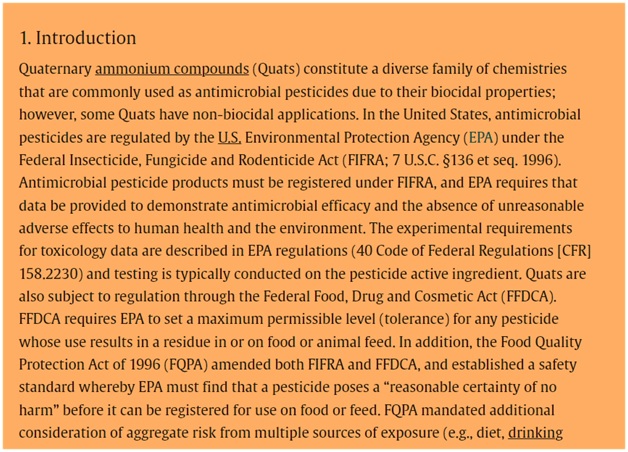
Approximately 81% of the disinfectants contained a single active ingredient, with the remaining disinfectants being composed of mixtures of two or more active ingredients. Of the single active ingredient disinfectants, approximately 48% contained quaternary ammonium compounds (quats).
According to an NIH study, the “properties of antimicrobial agents, such as those included in List N, may cause a wide range of adverse health effects in exposed individuals under certain conditions. For example, the majority of the active ingredients are point-of-contact irritants (i.e. eyes, skin, and respiratory tract) and some may be corrosive in concentrated form. Additionally, these active ingredients may contribute to the onset of acute systemic effects (e.g. central nervous system depression) or repeated-dose effects, such as developmental and reproductive toxicity (DART). Due to concerns regarding occupational exposures to disinfectants, the EPA has requested that the National Toxicology Program (NTP) investigate the link between respiratory illnesses and worker exposures for 10 selected antimicrobial active ingredients. And if that was enough of a bombshell, the majority of the active ingredients under investigation by NTP are components of the disinfectants included in List N.
As suspected breathing ammonium chloride compounds are not good for you. In fact they’re very bad. Inhaling these compounds for six hours is not advisable.
The other ingredients are also toxic. Robust toxicology databases do exist for both DDAC and C12–C16 ADBAC; however, the majority of available studies are unpublished. But don’t worry, they have been submitted to and reviewed by regulatory agencies (i.e., EPA and European Chemicals Agency).
As usual, Big Harma is talking out of both sides of their mouth. They say it’s safe, but the truth is that “despite their prevalence, nothing is known about the health effects associated with chronic low-level exposure” of the microbicides.
Chronic toxicity, only recently identified in mice, resulted in developmental, reproductive, and immune dysfunction. Cell-based studies indicate increased inflammation, decreased mitochondrial function, and disruption of cholesterol synthesis.

Antimicrobials such as these microbicides, fall under a U.S. federal law that regulates pesticides, fungicides & rodenticides. In Europe, antimicrobial agents are also regulated as biocides under the Biocidal Products.
One could argue that this is a disinfectant, not a pesticide. However, in some instances, they are listed as ‘microbicide pesticides’ – whatever the heck that is.
In this attack against humanity, stealth disablers have been created to slowly destroy the immune system. Virex II 256 is an effective weapon in a long-term strategy.
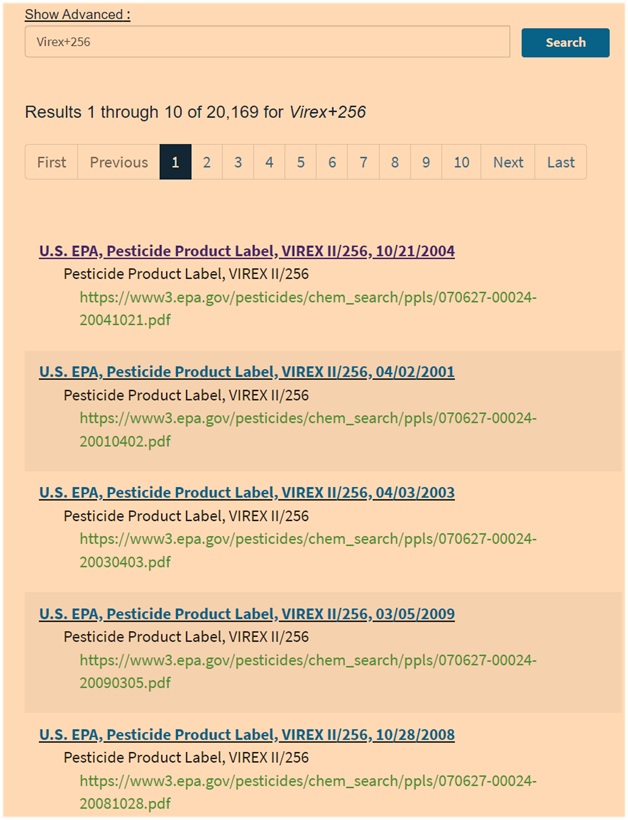
++++++++++++++++++++++++++++++++++++++++++++++++++++++++++++++++++++++
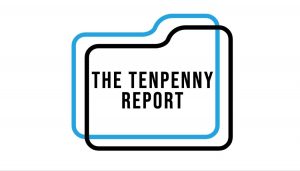 Like what you’re reading on The Tenpenny Report? Share this article with your friends. Help us grow.
Like what you’re reading on The Tenpenny Report? Share this article with your friends. Help us grow.
Get more of Dr. Tenpenny’s voice of reason at her website.
Join our list here
Make a donation here (and thank you!)
++++++++++++++++++++++++++++++++++++++++++++++++++++++++++++++++++++++
Maryam Henein is an investigative journalist, and founder, and editor-in-chief of the health magazine and marketplace HoneyColony. Read her Substack here. She is also a functional medicine consultant/coach, and the director of the award-winning documentary film Vanishing of the Bees, narrated by Elliot Page. Follow her on Twitter @maryamhenein. Email her: maryam@honeycolony.com.
All comments and opinions shared by our interviewees are their own and may not reflect the opinions of Dr. Tenpenny or any of *The Tenpenny Companies* programs or subsidiaries. We are neither responsible nor liable for any discrepancies in our guest authors’ articles or video recordings.

